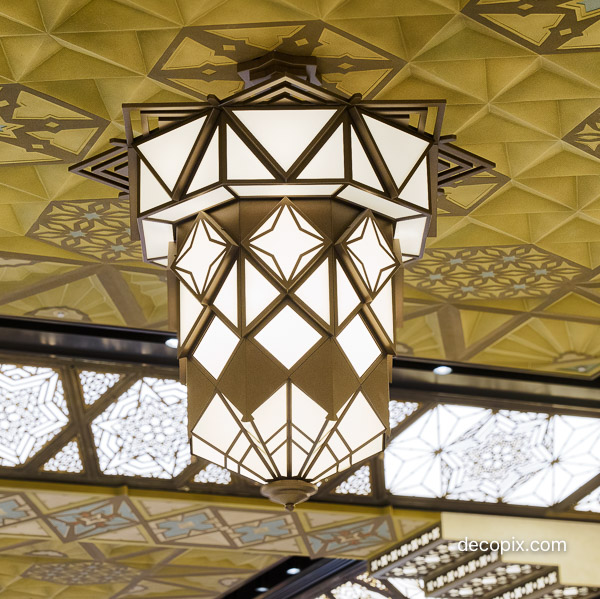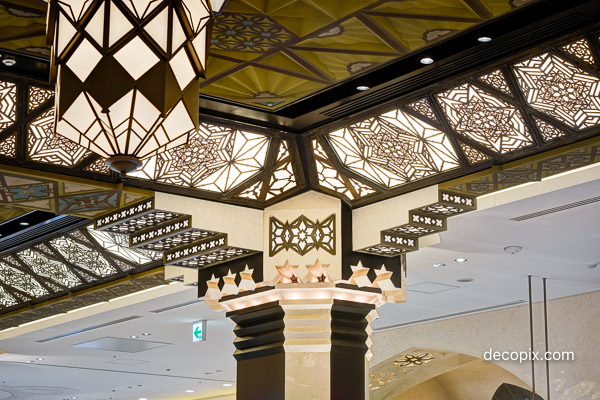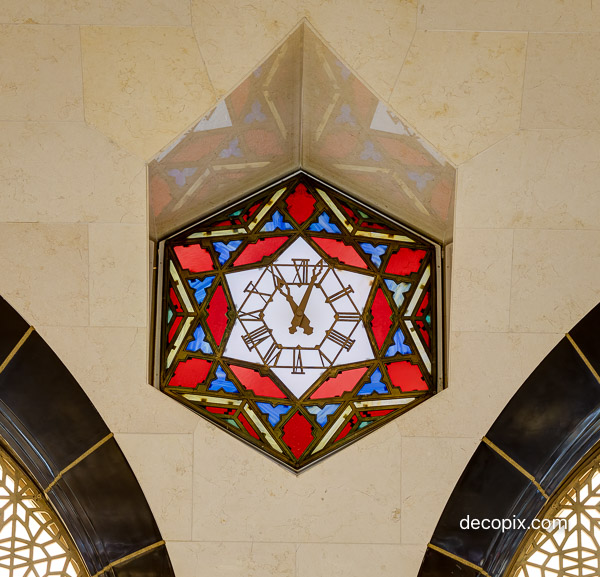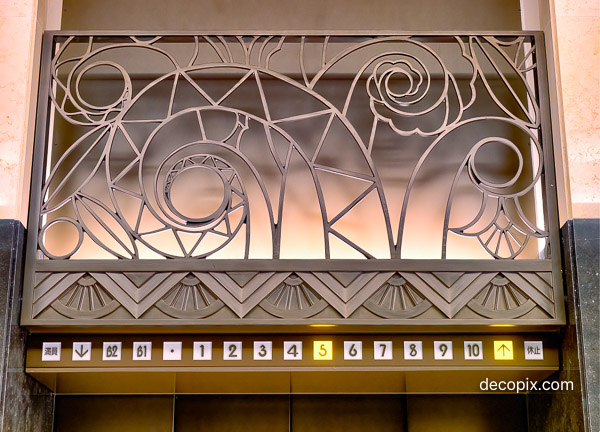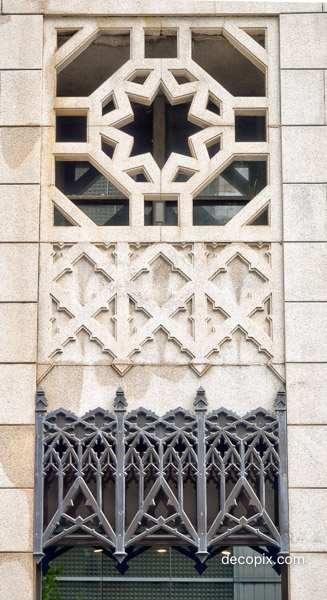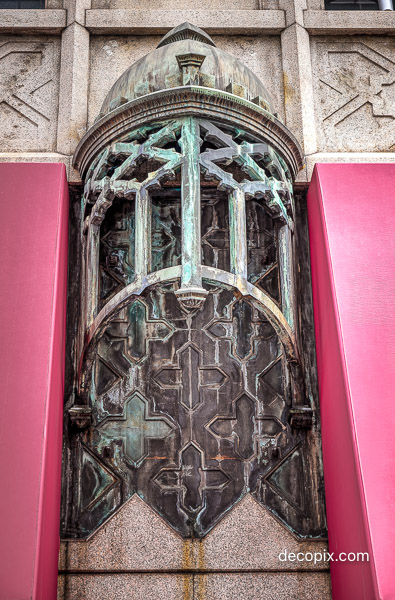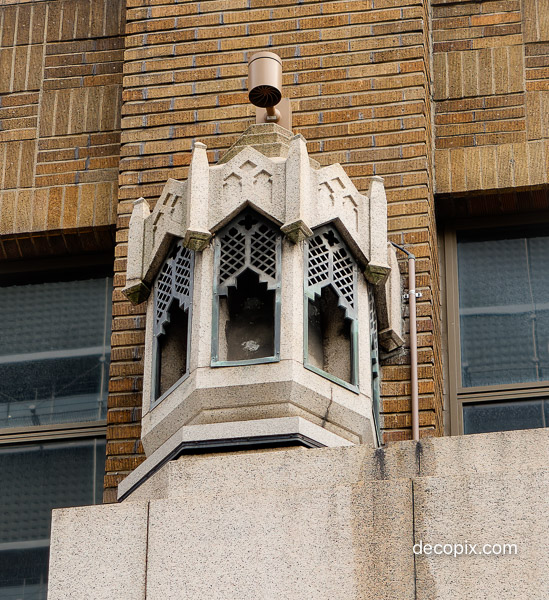How did a Christian missionary end up designing the ultimate Art Deco department store? And where is it? In Paris?

Main entrance. They’re pretty worn, but you may just be able to see the peacocks in the upper corners.
It’s in Japan, and it’s still in business! If you’re old enough to remember visiting a department store that seemed to have everything, staffed with people devoted to assisting you, you can see why this business model fits well in Japan. In fact, the Japanese have stepped things up, with gourmet food basements (depachickas) and rooftop terraces where you can eat, or play with your kids, or just take in the view.
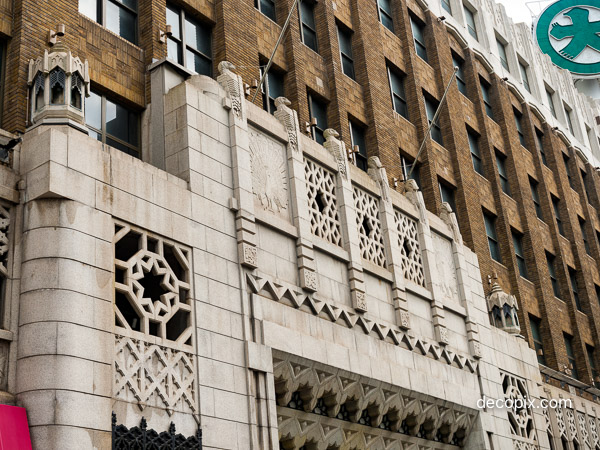
More details of the entrance. The character at top right is the symbol for Diamaru.
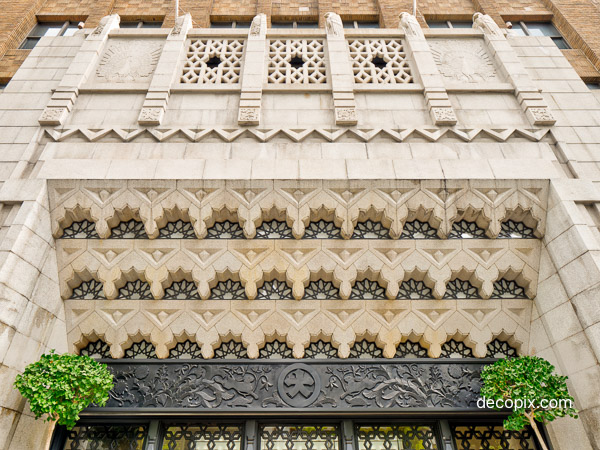
Let’s go in!
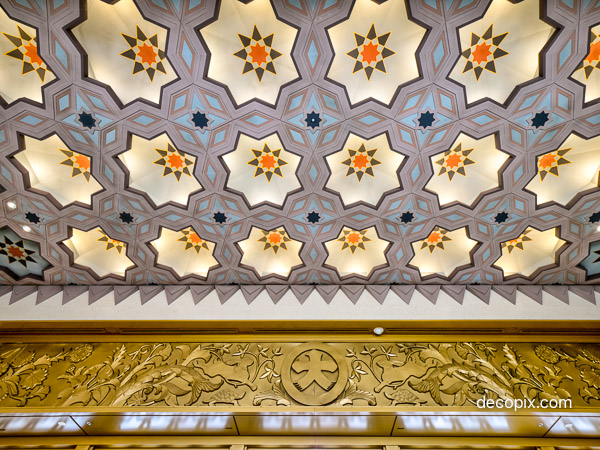
Ceilng, entrance vestibule.

Door detail
Working on a review of the best Art Deco book of 2023, The Complete Commericial Artist, Making Modern Design in Japan, I came across an interesting tidbit. A segment of Japanese society once regarded merchants as a lower class since they did not produce goods; merely transactions. So this may have motivated desingers of Japan’s department stores to make them into palaces. (If you read about the Kadoories and Sassoons in Shanghai, you’ll pick up a similar merchant=lower class thread).
The main Tikyo locations of Mitsukoshi, Isetan and Takashimaya are all well worth a visit for the Art Deco admirer. The exception is Daimaru, but in Osaka, Daimaru reigns supreme.
Back to the story. William Merrell Vories, aka Merrell Vories, aka Hitotsuyangi Mereru, was born in 1880 in Leavenworth, Kansas to a deeply religious family. By age 8, he demonstrated talent playing the piano which, as we’ll see, figures into the story. He also developed TB (interestingly, not unlike another obscure Deco architect, Temple Buell). Both men recovered, and Voories would later build a sanitorium for victims of the disease.
Merrell Voories planned to study architecture at M.I.T. but in 1902, he attended a lecture by Mrs. Howard Taylor, a Christian missionary to China. Mrs. Taylor spoke with such conviction about the persecution of Chirstians in China that Voories decided to devote his life to missonary work overseas. He applied to the SVM, Student Volunteer Movement and in 1905 was sent to Japan.
Popular with his Japanese students, it seems Voories did his job too well. In 1907 he was fired for overenthusiastic proselytizing in a country where hardly anyone was a Christian. And so Voories tuned to archtecture after all, building some 1600 homes, schools and hotels, yet I could find no record of his ever taking a class in architecture! Similarly, his name is supposed to be well known in Japan, yet I couldn’t find anyone outside the walls of Daimaru who knew who he was.
In 1918, Voories built a sanitarium, and in 1920, in a stroke of unintentional commercial genius, he introduced the American product Mentholatum to Japan. If you’re familiar with Japan’s damp climate and how stingy people are with home heating, you’ll appreciate why Mentholatum was such a success. And remember I mentioned the piano? Voories is credited with introducing the Hammond organ to Japan as well.
Vories’ finest hour, the Daimaru in Shinsaibashi was completed in 1933. The store has since been expanded but with every attempt made to preserve the original details. I’ve looked at a lot of his other work and none comes close to the opulence of Daimaru. I did find another fabulous place that might be his, but I don’t know for sure so I’ll save it for another post.
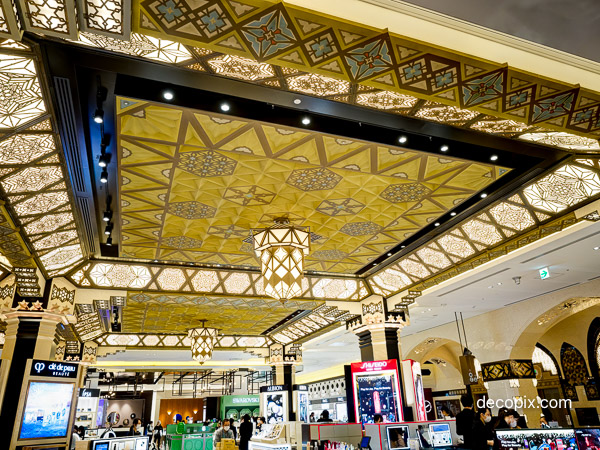
Main floor
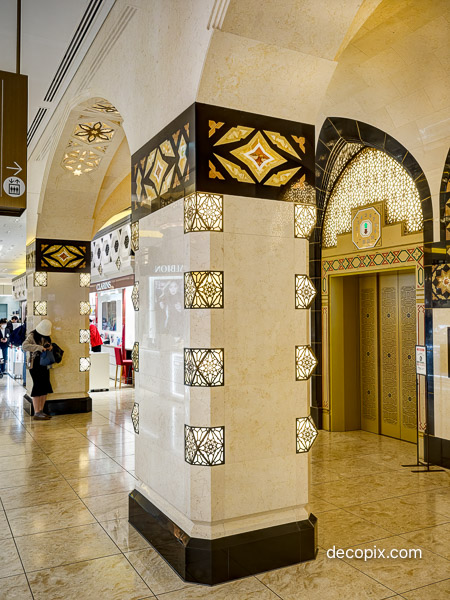
There is soft light everywhere, even these columns.
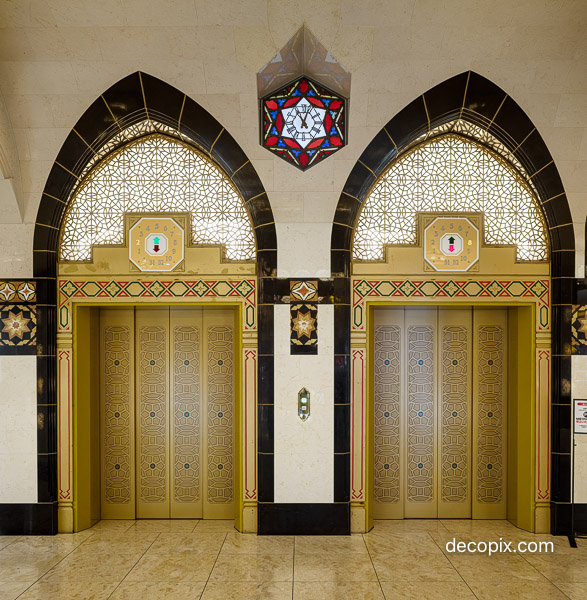
The upper floors are not as extraordinary as the first floor but they’re still pretty great.

Each floor has inlayed stone markers. They’re quite large, about 3 feet across.
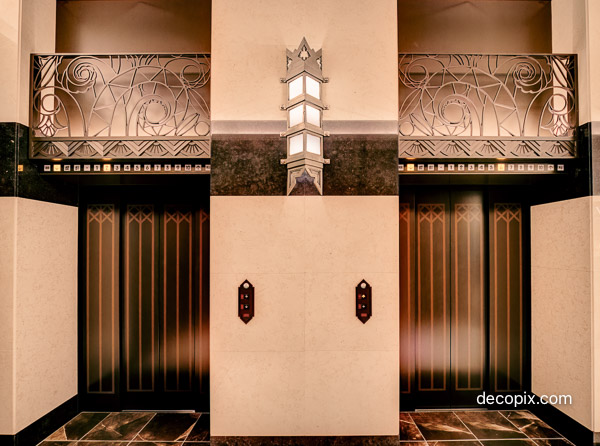
Upper floor elevators. The lamp looks a lot like the lamps at Tokyo University.

Stained glass over one of the exits.
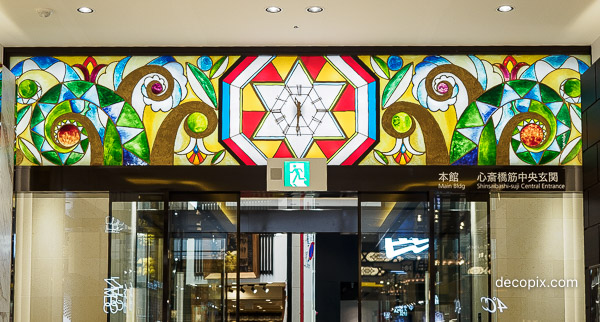
Another glass exit panel.
And here’s a bit more from the outside.
In addition to his missonary work and successful architecture and vapor rub businesses, Merrell Vories did bigger things. Just before the attack on Pearl Harbor, he married a Japanese woman and become a Japanese citizen. Poor timing, perhaps, but when the war ended, Voories was chosen as a messenger – negotiator between SCAP, Supreme Commander Allied Powers and the Japanese government. Vories met with the emperor four times and even floated the idea that the emperor should renounce his status as a divinity to encourage a more peaceful outcome at the war’s end.
Vories suffered a stroke in 1957 and passed away in 1964 having led a fascinating life, mostly lost to history, it seems.
